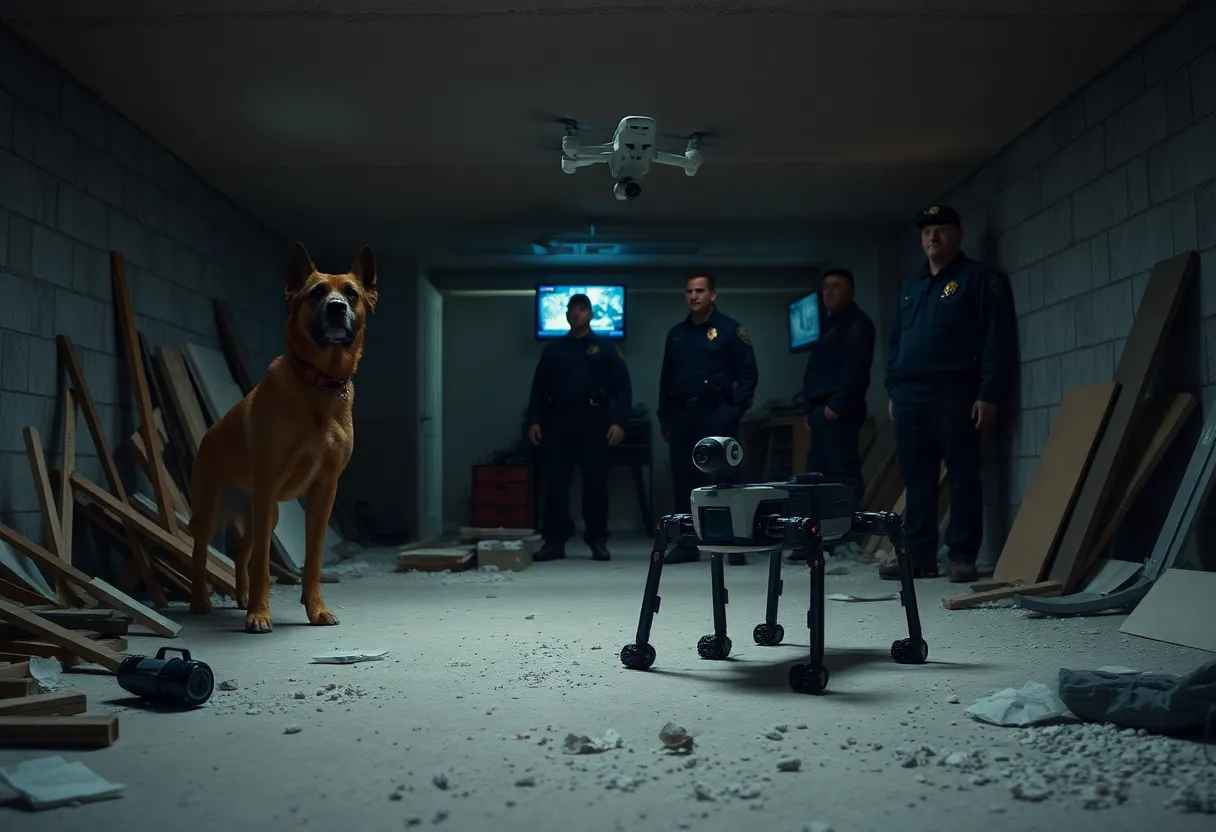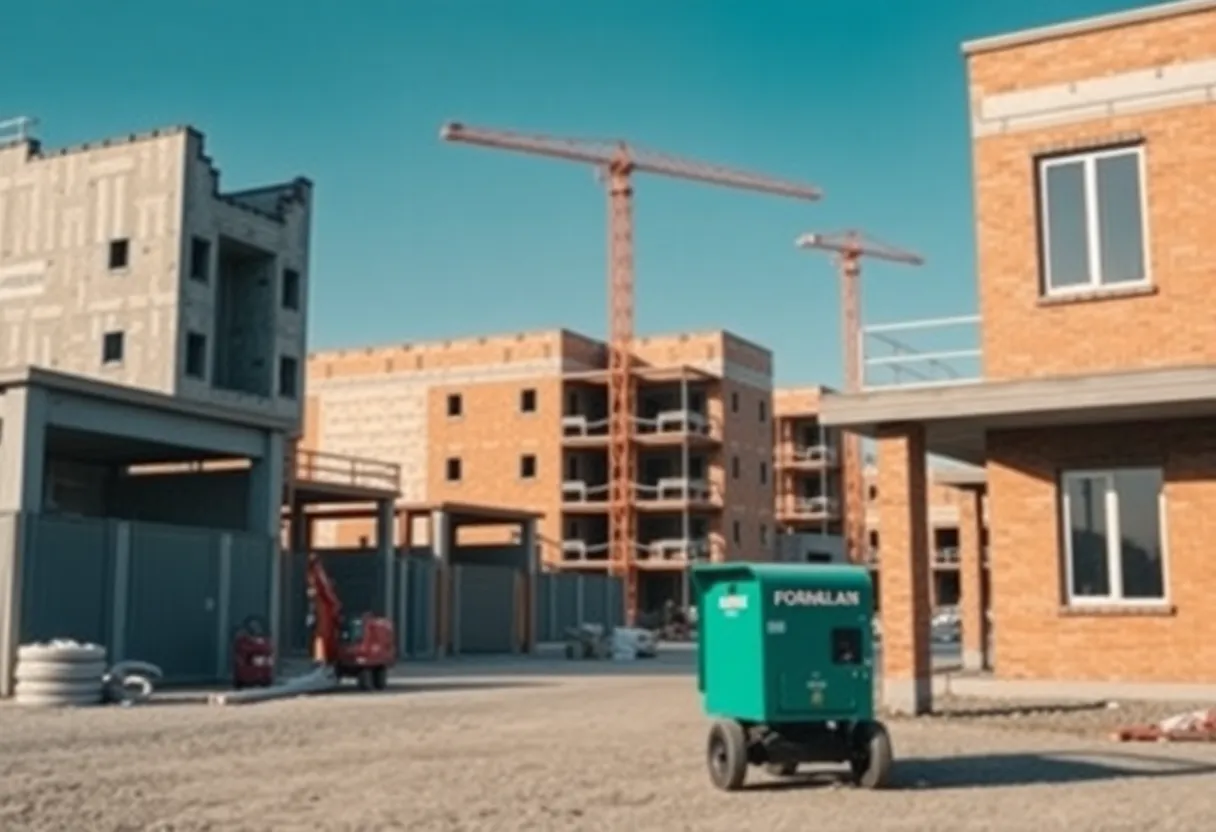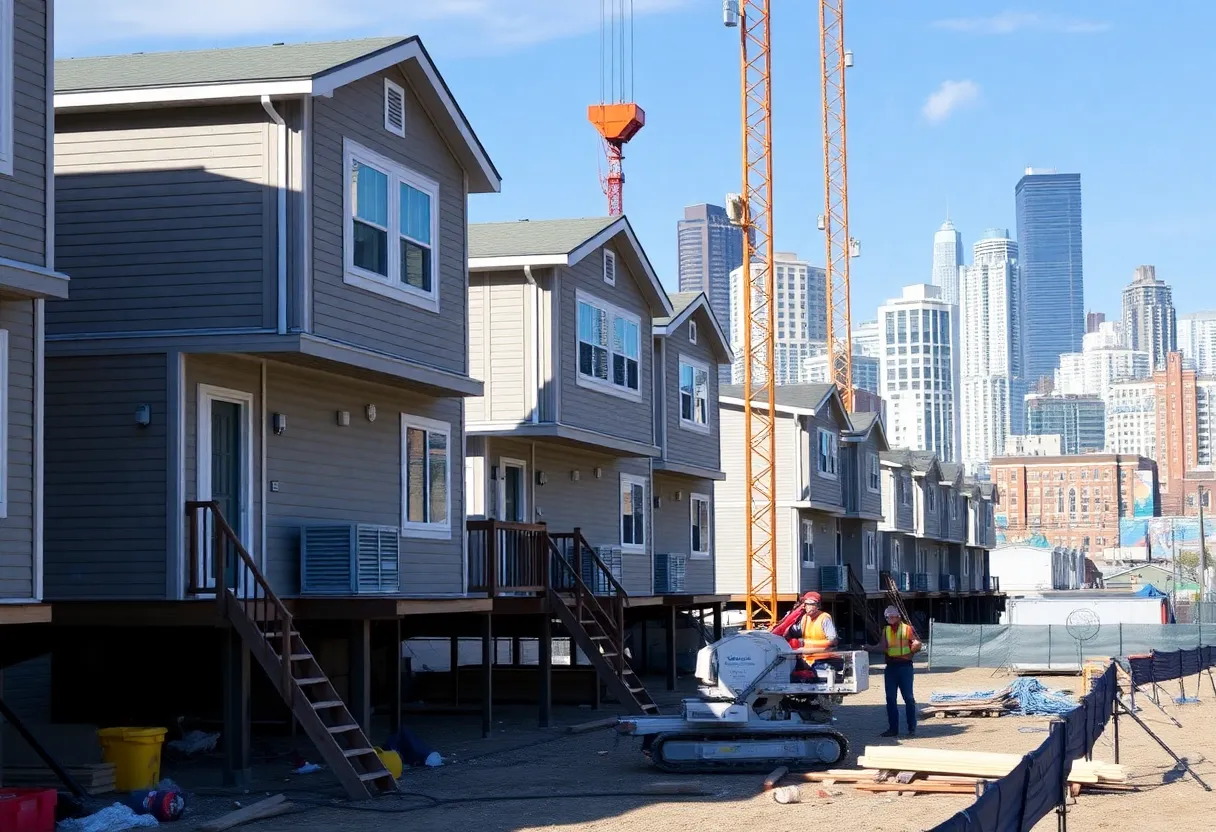Enfield, Connecticut, August 25, 2025
News Summary
A suspected burglar hiding inside a Garden Street home in Enfield, Connecticut, was found and arrested after a police K-9 completed a building search. Officers first used aerial drones to sweep floors but could not locate the subject; K-9 Dunkin, a German shepherd, cleared multiple levels and located the suspect hiding under basement construction debris. The response highlighted the department’s recent purchase of a four-legged robotic unit, R3KO, added to its UAV program to inspect confined or obstructed indoor spaces where aerial drones have limitations. The robot provides live camera feeds, can carry small payloads and is operated by trained officers to enhance officer and public safety.
Enfield police K-9 finds burglary suspect after drone search; department adds four-legged robot to drone program
In a June response to an active burglary at a Garden Street residence in Enfield, police used both aerial drones and a K‑9 unit to search a multi‑story home. After one drone pilot cleared each floor without locating a suspect, K‑9 Dunkin, a three‑year‑old German shepherd, searched the building and ultimately found a person hiding under construction debris in the basement. Officers reported no injuries to the subject or to personnel, and the person has not been publicly identified or formally charged in the incident.
The response began when a homeowner reported seeing a man force entry. Security cameras captured a person inside the house, prompting officers to request the department’s combined Drone and K‑9 Unit and to set up a safety perimeter around the property. While the aerial drone team cleared several floors and returned no positive sighting, the on‑the‑ground canine search cleared multiple levels before attention turned to the basement, where a broken window was discovered. After multiple loud announcements calling for the suspect to surrender produced no response, K‑9 Dunkin entered and located the person under debris.
Immediate outcomes and safety
The use of the drone and K‑9 teams helped officers manage the scene and focus searches safely. The department emphasized that the combined approach prevented injuries and resolved the situation without force. Police did not release the suspect’s name or detail formal charges as of the time of the report.
Why a robot dog was added to the drone lineup
The department has an active UAV/aerial drone program that has been used before for locating missing people and for public and officer safety. After a recent incident highlighted the limits of aerial drones for indoor or cluttered building entries—situations where a drone might crash or be unable to put “eyes on” a threat—the department reviewed its UAV program budget and purchased a quadruped robot to expand capabilities and reduce risk to officers and the public.
The new unit is a four‑legged robotic drone spelled R3KO and pronounced like Rico. The name is a play on a well‑known droid name from science fiction. The robot was bought using existing funds from the drone program and cost just under $5,000, with reported values of about $4,700 and alternatively described as just shy of $4,800 in separate reports. The department noted the robot’s price is roughly similar to that of traditional aerial drones in its inventory.
What the robot looks like and what it can do
From a distance, the robot resembles a small canine but appears too small to pass for a German shepherd or Malinois. Up close it looks thin and mechanical. Its design intentionally mimics a dog’s form to offer familiar body language. A small camera serves as its head appendage; wires and metal are visible. Its joints move in ways similar to, and in some cases surpassing, natural canine movement.
Key capabilities include the ability to:
- Walk, sprint, sit, jump
- Navigate stairs and pass through doorways
- Get through partially closed doors and curtains
- Walk on two legs and perform acrobatic motions
- Provide live video via a mounted camera
- Carry small payloads such as a cell phone to enable communication
Trained officers control the robot, which can be used to put electronic “eyes” on areas where aerial drones cannot safely go. The department tested the robot in a burglary call shortly after it became operational. In that response, the robot helped clear certain rooms and confirm some spaces were safe, but it did not find the person hiding beneath basement debris; that person was later found by the real K‑9 without injuries.
Program goals and policing changes
Leaders in the department described the robot as part of a broader push to improve officer safety and reduce the need for staff to physically enter risky spaces. The engineering choice to mimic a dog aims to create a less threatening presence during tense encounters and to offer a familiar appearance that might help de‑escalate interactions. The department views the robot as an early step in adopting new tools that add situational awareness and life‑safety options for officers and the public.
Other recent K‑9 operations
The department’s K‑9 has also helped in recent vehicle and tracking incidents. In one event, officers found a vehicle with mismatched registration and a person who attempted to flee on foot. The K‑9 tracked through a nearby commercial area and alerted officers to the person hiding in a restroom stall, leading to an arrest. That tracking work illustrates how canine assets continue to play a key role alongside drones and robotic platforms.
What to expect going forward
The robot is being integrated into the existing Drone and K‑9 Unit as an additional life‑safety tool. It will be deployed by trained staff when its movement, camera and payload abilities offer advantages over aerial drones or physical entry. The department plans to continue using a mix of technologies to limit risk during building clears, barricades, missing‑person searches and other operations.
FAQ
How was the suspect found during the Garden Street burglary?
The suspect was located in the basement under construction debris after K‑9 Dunkin entered the area following announcements requesting surrender. Aerial drones had previously cleared floors but did not find the person.
Did anyone get hurt?
No injuries were reported to officers or the individual who was located.
What is R3KO/Rico?
R3KO, pronounced Rico, is a four‑legged robotic unit added to the police department’s UAV/drone lineup to improve visual access to spaces where aerial drones cannot safely operate.
How much did the robot cost and how was it funded?
The robot cost was reported near $4,700 to $4,800 and was purchased using existing funds from the department’s UAV/drone program budget.
What can the robot do that drones cannot?
The robot can navigate stairs, pass through doorways and partially closed curtains, carry a small payload such as a phone, and provide live video in cluttered or indoor spaces where aerial drones may be limited.
Key features at a glance
| Item | Detail |
|---|---|
| Incident location | Garden Street residence, Enfield |
| K‑9 used | K‑9 Dunkin, 3 years old, German shepherd |
| Outcome | Suspect located under basement debris; no reported injuries |
| Drone role | Aerial drone cleared floors but could not locate suspect indoors |
| Robot added | R3KO (pronounced Rico), four‑legged robotic drone |
| Robot cost | Reported around $4,700–$4,800; purchased from UAV program funds |
| Robot capabilities | Walk/sprint/jump, navigate stairs, pass through doors and curtains, live camera, carry small payload |
| Control | Operated by trained officers as part of Drone and K‑9 Unit |
| Program purpose | Enhance officer, subject and public safety; provide visuals where drones cannot safely go |
Deeper Dive: News & Info About This Topic
Additional Resources
- FOX61: Enfield police purchase robot K-9 unit
- Wikipedia: Quadruped robot
- CT Insider / Journal Inquirer: Enfield drone dog/robot police
- Google Search: Enfield R3KO robotic dog
- Patch: Enfield police dog locates burglary suspect
- Google Scholar: police K-9 building search
- WWLP: Enfield police use drone and K-9 to capture burglary suspect
- Encyclopaedia Britannica: police dog
- WFSB: K9 Dunkin helps track down fleeing suspect near Enfield Commons
- Google News: Enfield K-9 Dunkin
Author: Construction NY News
The NEW YORK STAFF WRITER represents the experienced team at constructionnynews.com, your go-to source for actionable local news and information in New York and beyond. Specializing in "news you can use," we cover essential topics like product reviews for personal and business needs, local business directories, politics, real estate trends, neighborhood insights, and state news affecting the area—with deep expertise drawn from years of dedicated reporting and strong community input, including local press releases and business updates. We deliver top reporting on high-value events such as the New York Build Expo, infrastructure breakthroughs, and cutting-edge construction technology showcases. Our coverage extends to key organizations like the Associated General Contractors of New York State and the Building Trades Employers' Association, plus leading businesses in construction and real estate that power the local economy such as Turner Construction Company and CMiC Global. As part of the broader network, including constructioncanews.com, constructiontxnews.com, and constructionflnews.com, we provide comprehensive, credible insights into the dynamic construction landscape across multiple states.





